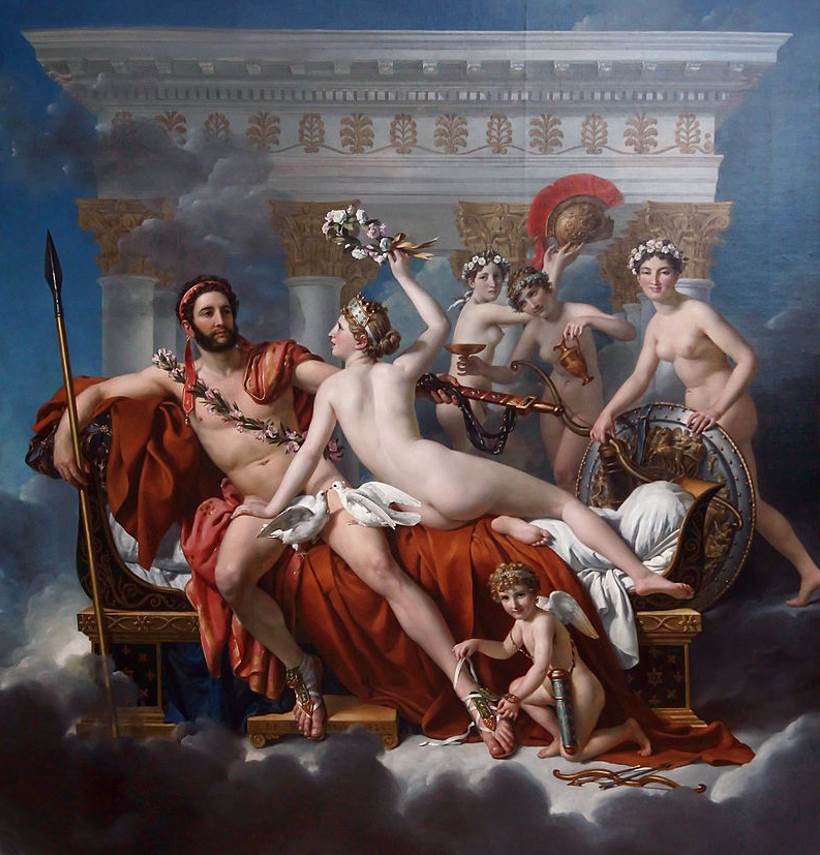The capital city of Belgium is home to a mountain of art. Well, not literally, but the location where you can find the most famous museums is known as the “Mont des Arts” or “Kunstberg.”
This translates from French and Dutch respectively (Brussels is bi-lingual) to “Art Mountain” and it can be described as one of the most picturesque places in the city.
The museum was founded by Napoleon Bonaparte in 1801 and it first opened its doors 2 years later in 1803 as the “Museum of Fine Arts of Brussels.”
Today, the museum is known as the “Royal Museums of Fine Arts of Belgium” and is divided into 6 different departments:
- The Oldmasters Museum
- The Magritte Museum
- The Fin-de-Siècle Museum
- The Modern Museum of Art
- The Antoine Wiertz Museum
- The Constantin Meunier Museum.
Together, these museums house over 20,000 drawings, sculptures, and paintings that span a period from the late Middle Ages to modern times.
In this article, you’ll discover some of the highlights of the painting collection of the Royal Museums of Fine Arts of Belgium.
1. Episode of the Belgian Revolution of 1830 – Gustaaf Wappers
- Date created: 1835
- Dimensions: 444 x 660 centimeters (174.8 x 259.84 inches)
- Location: Oldmasters Museum
Episode of the Belgian Revolution of 1830 is the title of a monumental historical painting by Gustaaf Wappers (1803-1874), a Belgian painter from Antwerp who painted in the Romantic style. The title of this huge painting is self-explanatory as it depicts a scene from the Belgian Revolution that resulted in the establishment of the country.
The painting kind of resembles “Liberty Leading the People” (1830), an equally amazing painting by Eugène Delacroix (1798-1863) that was inspired by the French Revolution that year. It’s fairly obvious that Wappers was inspired by his French colleague.
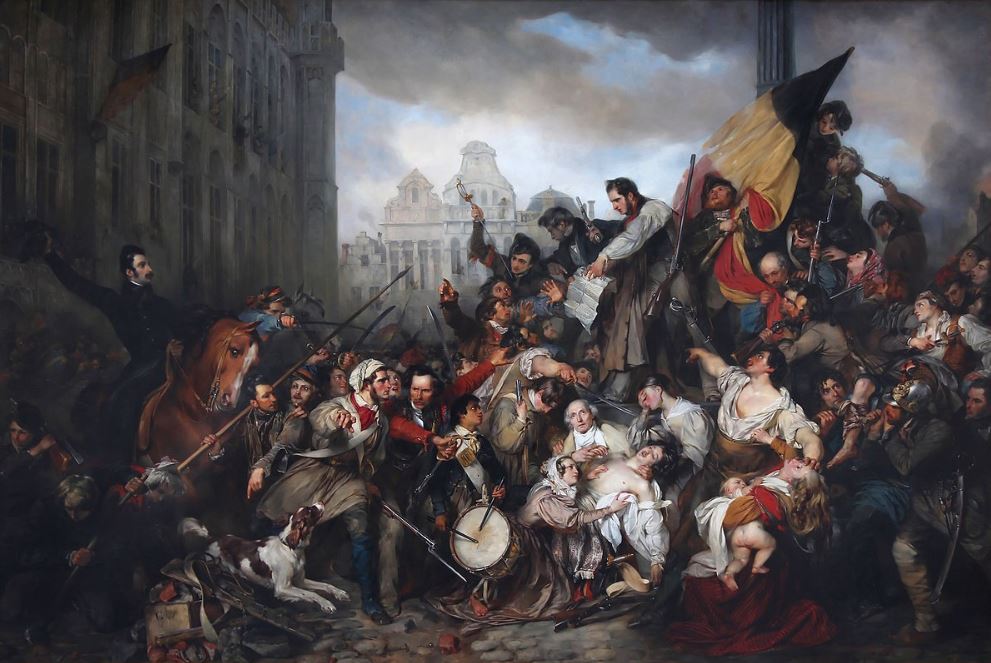
2. The Empire of Light – René Magritte
- Date created: 1954
- Dimensions: 146 x 114 centimeters (57.48 x 44.88 inches)
- Location: Magritte Museum
The Empire of Light is the title of a painting by René Magritte (1898-1967), arguably the most famous Belgian artist in history. The Surrealist painter usually produced artworks that define logic, including this remarkable brain-teasing work of art.
The upper part of the painting shows a bright sky while the lower section depicts a dark and gloomy street that requires artificial light. This was one of the favorite topics of the artist as he completed 27 works of art revolving around this subject, including 17 oil paintings and 10 watercolors.

3. The Death of Marat – Jacques-Louis David
- Date created: 1793
- Dimensions: 162 × 128 centimeters (64 × 50 inches)
- Location: Oldmasters Museum
The Death of Marat is one of the best-known paintings by Jacques-Louis David (1748-1825), a French artist who was politically active throughout his career. He initially joined the French Revolution and later became the personal painter of Napoleon Bonaparte during his reign.
This work depicts the aftermath of the assassination of Jean-Paul Marat (1743-1793), an influential figure in the early phase of the French Revolution. He was killed by Charlotte Corday, a woman who supported his political opponents, “Les Girondins,” while he was taking a bath.
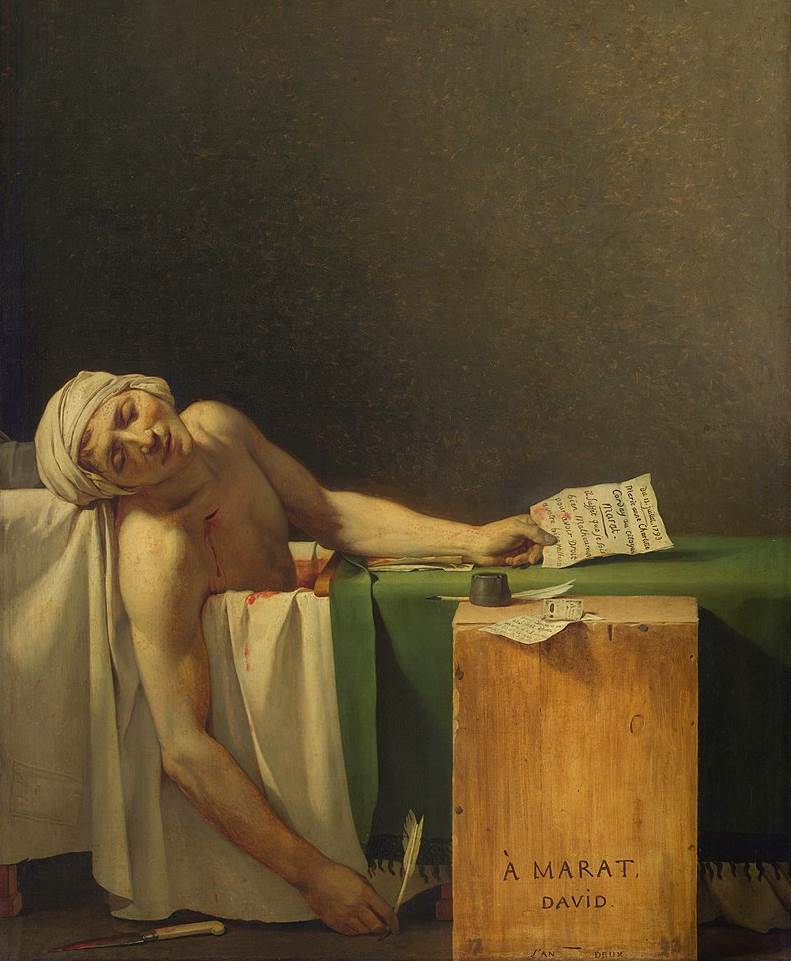
4. The Census at Bethlehem – Pieter Bruegel the Elder
- Date created: 1566
- Dimensions: 116 × 164.5 centimeters (46 × 64.8 inches)
- Location: Oldmasters Museum
The Census at Bethlehem is a remarkable painting by Pieter Bruegel the Elder (1525-1569), one of the leading artists of the northern Renaissance in the 16th century. It depicts the well-known Biblical story of the so-called “census of Quirinius” in the Roman province of Judea in the early 1st century A.D.
This presumably took place in modern-day Syria but Bruegel chose to depict Bethlehem as a Flemish village. Better yet, he was inspired by the harsh winter of 1565, still one of the coldest to date, to transform the scene into one of the first winter landscapes in art history.
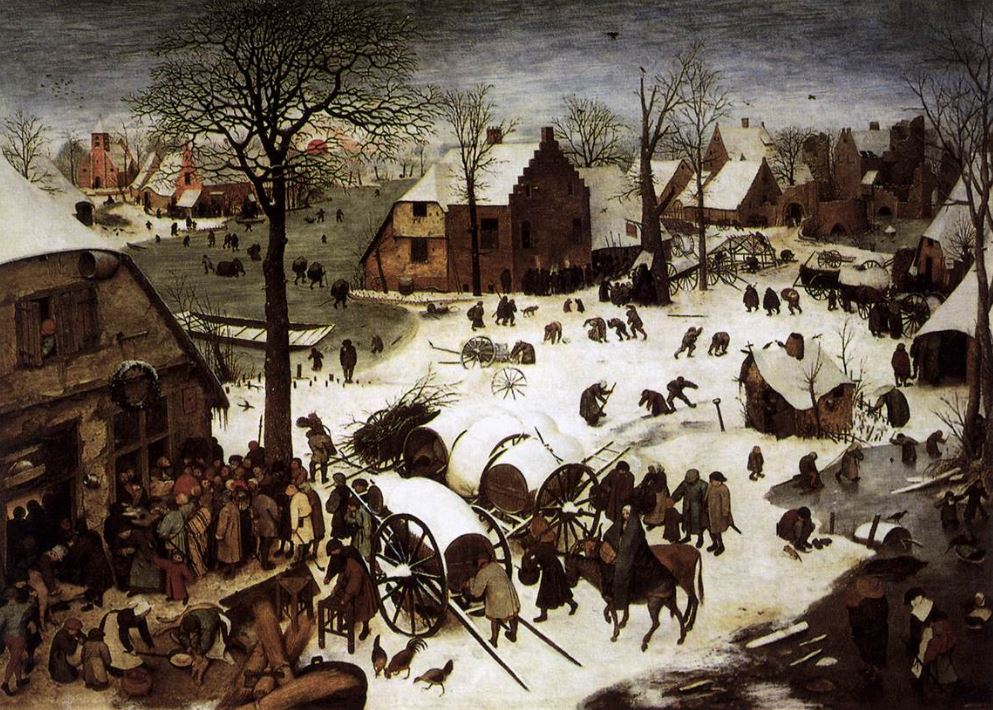
5. The Premature Burial – Antoine Wiertz
- Date created: 1854
- Dimensions: 160 x 235 centimeters (62.9 x 92.5 inches)
- Location: Wiertz Museum
The Premature Burial is the title of a painting by Antoine Wiertz (1806-1865), another famous Belgian artist who worked during the Romantic era. Despite this notion, he is considered to be an individualistic artist who often included macabre and peculiar subjects in his art such as this one.
In a sense, he was a symbolist artist who lived several decades before the art movement actually began. His influence in the world of art was therefore significant and because of this, a museum in Brussels was dedicated to his works where you can find this frightening painting.
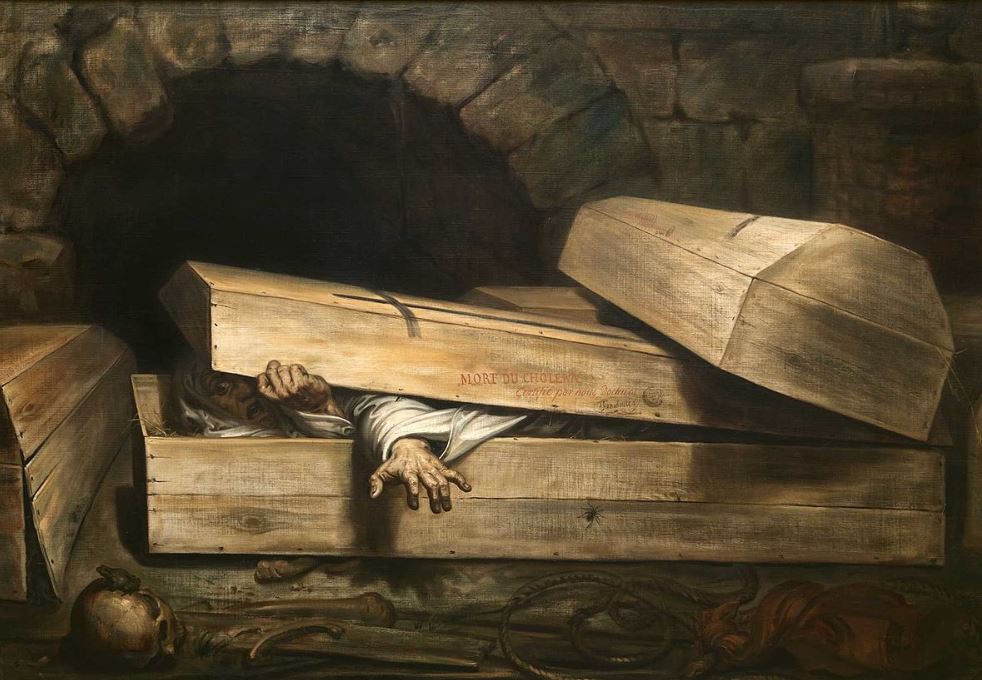
6. Philip the Fair and Joan the Mad – Master of Affligem
- Date created: 1495-1506
- Dimensions: 125 × 47 centimeters (49.2 × 18.5 inches) (each panel)
- Location: Oldmasters Museum
Philip the Fair and Joan the Mad is a dual full-length portrait that was completed by an unidentified painter known today as the “Master of Affligem.” We only know that he probably lived and worked in Brussels and a few paintings, including these works, were identified as his.
The subjects of these paintings are Philip the Handsome (1478-1506), the Archduke of Austria of the House of Habsburg, and the woman he married in 1496 by arrangement, Joanna of Castille (1479-1555). The setting is believed to be the gardens of the Castle of Brussels.
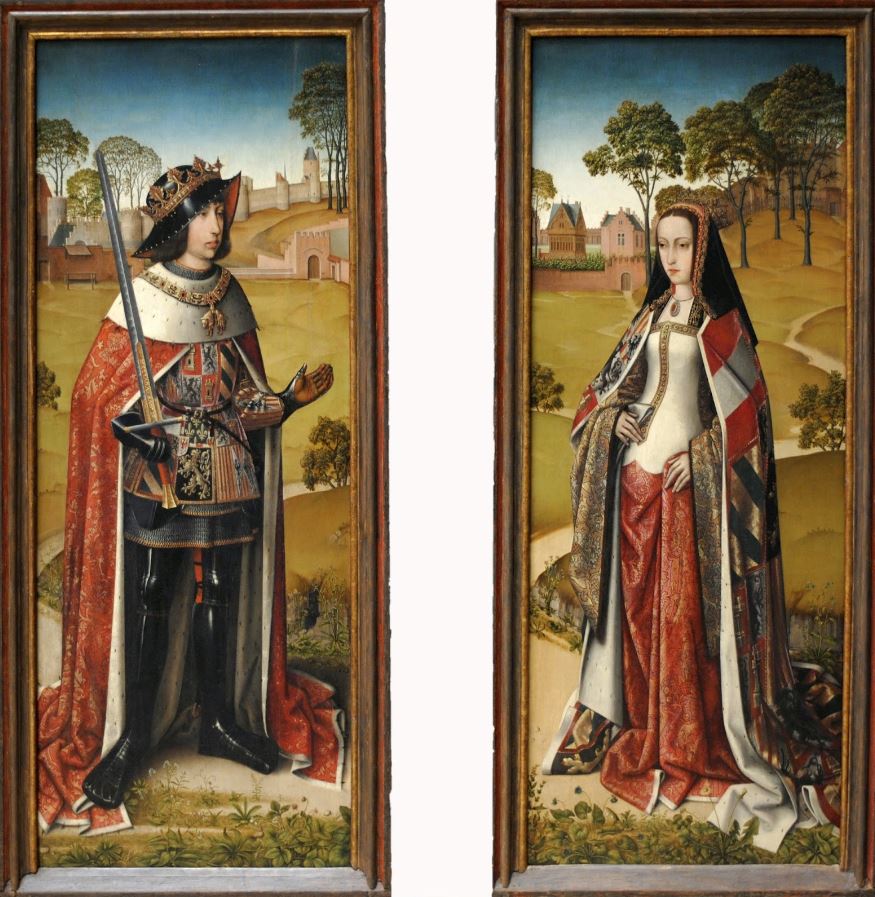
7. The King Drinks – Jacob Jordaens
- Date created: 1640
- Dimensions: 156 x 210 centimeters (61.4 x 82.6 inches)
- Location: Oldmasters Museum
The King Drinks is the title of one of at least 10 paintings by Jacob Jordaens (1593-1678). He was a Flemish artist who became the leading artist of the Baroque era in the 17th century following the death of his colleagues Anthony van Dyck and Peter Paul Rubens.
The painting in Brussels depicts the so-called “Twelfth Night king,” a figure who is featured in a romantic comedy by William Shakespeare called “The Twelfth Night.” As you can see, the king certainly has a good time as he is surrounded by a jolly bunch who is drinking and playing music.

8. Landscape with the Fall of Icarus – Pieter Bruegel the Elder
- Date created: 1560
- Dimensions: 73.5 × 112 centimeters (28.9 × 44 inches)
- Location: Oldmasters Museum
Landscape with the Fall of Icarus is another painting that is generally attributed to Pieter Bruegel the Elder, but it’s also possible that his workshop completed it. It’s certain that the Flemish painter completed the composition, though, which proved to be very influential to future generations.
The story of Icarus who flew too close to the sun with his wings made of beeswax is a very popular one. This mythological painting shows a beautiful landscape and makes it hard to notice Icarus at first. Upon closer inspection, you can find him shown shortly after he crashed into the water in the bottom right corner.
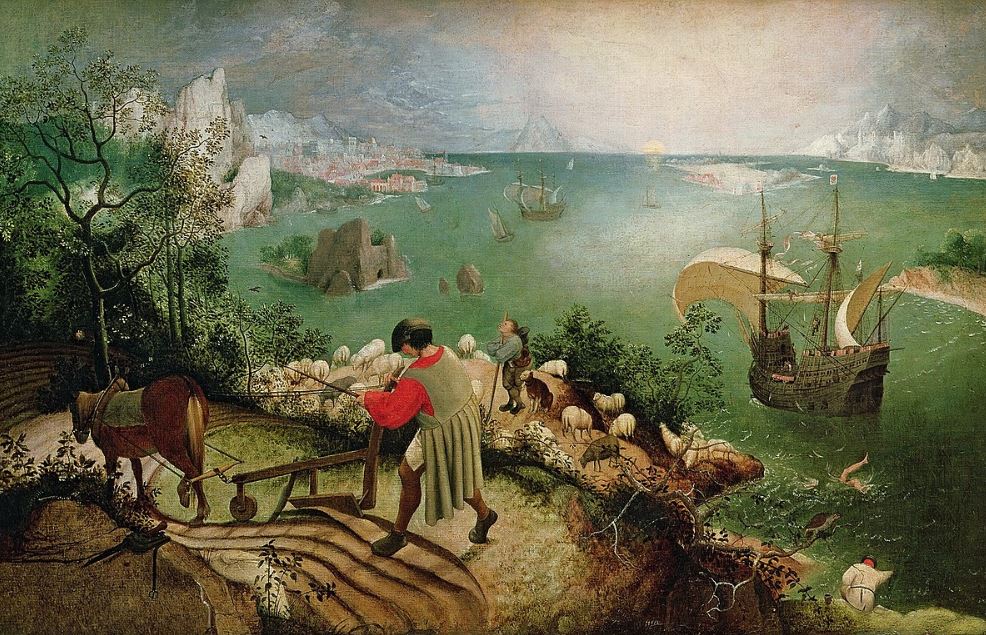
9. Pietà – Rogier van der Weyden
- Date created: 1441
- Dimensions: 32.5 x 47.2 centimeters (12.7 x 18.5 inches)
- Location: Oldmasters Museum
Pietà is the title of a painting by Rogier van der Weyden (1399-1464), the leading Early Netherlandisch artist of the 15th century following the death of Jan van Eyck (1490-1441). This painting highlights the innovative talent of the Flemish artists at the time in terms of light and composition.
There are several copies of this painting in museums all across Europe, most notably in the National Gallery in London and the Prado Museum in Madrid. Studies have shown that the painting at the Royal Museums of Fine Arts of Belgium is the only one that was certainly completed by Rogier van der Weyden.
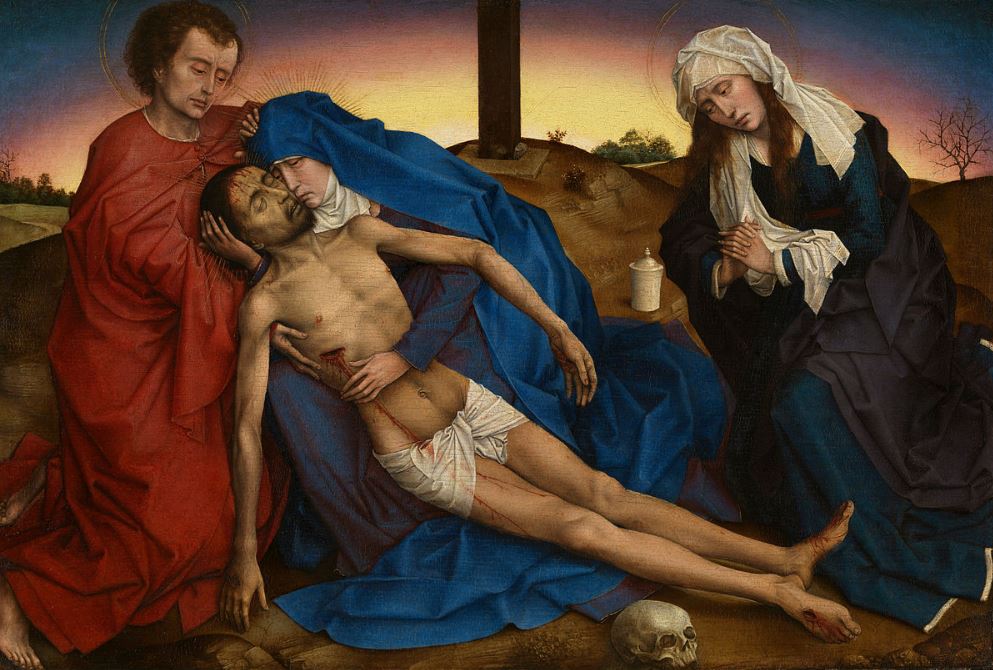
10. Mars Being Disarmed by Venus – Jacques-Louis David
- Date created: 1824
- Dimensions: 308 × 265 centimeters (121 × 104 inches)
- Location: Oldmasters Museum
Mars Being Disarmed by Venus is another painting by Jacques-Louis David, the French artist who spent the final years of his life living and working in Brussels. He exiled himself to the city because of the ultimate Fall of Napoleon in 1815.
This remarkable work of art was the final painting that he ever completed and he spent a lot of time trying to turn it into his ultimate masterpiece. Even though he didn’t succeed in this endeavor, in my opinion, it’s certainly a masterpiece you should see at the Oldmasters Museum.
